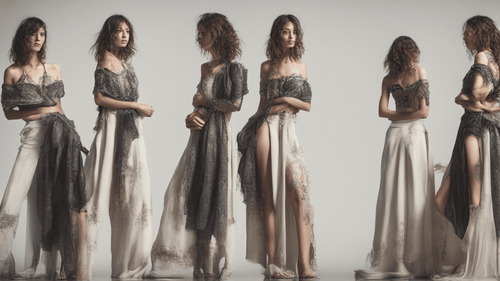
Introduction
In the rapidly evolving landscape of artificial intelligence (AI) and digital communication, the synergy between Chat GPT and plagiarism has become a topic of significant concern and exploration. As AI-powered chatbots like GPT-3 revolutionize interactions, the specter of plagiarism raises ethical and practical questions. In this comprehensive guide, we delve into the intricate relationship between Chat GPT and plagiarism, examining its impact, challenges, and potential solutions.
Understanding Chat GPT
Chat GPT, short for "Generative Pre-trained Transformer," is a cutting-edge AI language model developed by OpenAI. Powered by deep learning algorithms, Chat GPT can engage in natural-sounding conversations, generate human-like text, and perform a myriad of language-related tasks. Its remarkable ability to comprehend context and produce coherent responses has transformed various industries, from customer service to content creation.
The Plagiarism Predicament
A Closer Look at Plagiarism
Plagiarism, the act of using someone else's ideas, words, or work without proper attribution, has been a longstanding concern in academia and creative spheres. However, the advent of AI introduces a new dimension to this challenge. As Chat GPT becomes more sophisticated, its propensity to inadvertently generate plagiarized content also increases.
Unintentional Plagiarism by Chat GPT
The intricate web of language, context, and creativity makes it challenging for AI models like Chat GPT to always produce entirely original content. The AI's vast training data might inadvertently lead to responses that resemble existing works, blurring the line between authenticity and plagiarism.
Ethical Implications
The emergence of unintentional AI-generated plagiarism raises pertinent ethical questions. Who holds responsibility when Chat GPT unknowingly produces plagiarized content? How can creators safeguard their work from unintentional AI infringement? Exploring these questions is essential to ensure a harmonious coexistence between AI and human creativity.
The Impact of Chat GPT on Content Creation
Enhancing Creativity and Efficiency
Chat GPT has the potential to enhance content creation processes. Writers, marketers, and creators can leverage its capabilities to brainstorm ideas, overcome writer's block, and draft initial content drafts. This augmentation of human creativity, however, should be approached with caution to avoid unintentional plagiarism.
Quality Control and Oversight
The integration of Chat GPT into content creation workflows necessitates robust quality control mechanisms. Human oversight is crucial to identify instances of potential plagiarism and ensure the content maintains originality and authenticity.
Redefined Roles of Content Creators
As Chat GPT becomes a valuable tool, content creators must adapt and redefine their roles. Embracing AI assistance can lead to innovative content strategies, provided that creators remain vigilant about the authenticity of their output.
Mitigating Plagiarism Risks with Chat GPT
Algorithmic Enhancements
OpenAI and other AI developers are actively working on refining algorithms to minimize unintentional plagiarism. These enhancements aim to strike a balance between generating contextually relevant responses and avoiding replication of existing content.
User Guidance and Education
Empowering users with comprehensive guidance on plagiarism risks and best practices is crucial. AI platforms can provide real-time alerts, suggestions for attribution, and educational resources to prevent unintentional plagiarism.
Customization and Training
Allowing users to fine-tune AI models and impart them with specific style preferences can contribute to content originality. By training Chat GPT to emulate desired writing styles, users can reduce the likelihood of unintentional plagiarism.
FAQs
Is Chat GPT's output always prone to plagiarism?
While Chat GPT aims for originality, its extensive training data might occasionally result in content that resembles existing works. Vigilance is key to identifying and rectifying potential plagiarism.
Can AI-generated content be considered plagiarism?
AI-generated content is a product of algorithms, but its resemblance to existing works raises complex questions. Proper attribution and discernment are vital to distinguish between creativity and plagiarism.
Who bears responsibility for AI-induced plagiarism?
The responsibility lies both with AI developers and users. Developers must enhance algorithms, while users should exercise caution, utilize guidance, and make conscious efforts to ensure originality.
How can content creators embrace AI without risking plagiarism?
Content creators should embrace AI as a tool, not a replacement. By using AI-generated content as a foundation and infusing personal creativity, creators can maintain authenticity and originality.
What measures can AI platforms take to mitigate unintentional plagiarism?
AI platforms can implement real-time alerts, attribution suggestions, and educational resources. These measures empower users to navigate the fine line between AI assistance and plagiarism.
Can AI ever completely eliminate plagiarism risks?
While AI can significantly reduce unintentional plagiarism, complete eradication might remain elusive due to the complexities of language and creativity.
Conclusion
In the dynamic interplay between Chat GPT and plagiarism, an intricate relationship unfolds, presenting both opportunities and challenges. The evolution of AI-powered communication necessitates a proactive approach to address unintentional plagiarism, fostering an environment where innovation and originality thrive. As AI technology advances and awareness grows, the future holds promise for a harmonious coexistence between Chat GPT and human creativity, with ethical considerations guiding the way forward.